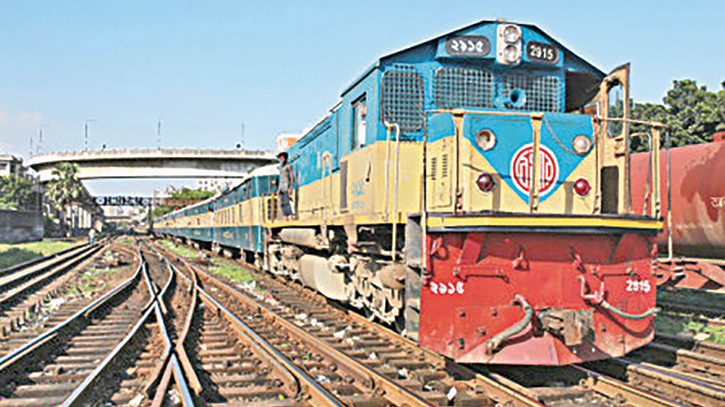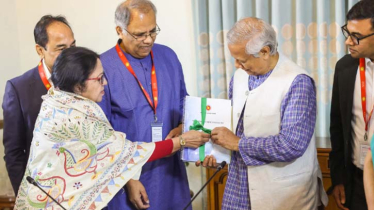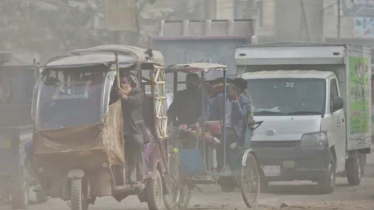
Photo : Collected
As part of the government's railway development initiative, new districts are being incorporated into the rail network. Upon completion of the railway construction project, the railway will be linked to a total of 55 districts across the country. The expansion efforts include connecting railways to 11 additional districts, namely Munshiganj, Shariatpur, Madaripur, Narail, Cox's Bazar, Bagerhat, Barisal, Patuakhali, Barguna, Jhalkathi, and Magura.
Despite efforts to expand the railway network, nine districts including Pirojpur, Bhola, Lakshmipur, Sherpur, Bandarban, Rangamati, Khagrachari, Sunamganj, and Meherpur remain excluded from the rail network plan. In 2014, Prime Minister Sheikh Hasina announced the division of railways into four regions with the aim of enhancing connectivity across the country. However, over the past decade, this announcement has yet to be implemented.
According to railway sources, the total length of railway track across the country currently stands at 3,553.78 km. Out of this, the eastern region comprises 1,742.19 km, while the western region encompasses 1,811.59 km. Moreover, there are 842.75 km of dual gauge railways and 1,702.32 km of meter gauge railways in operation.
Prior to this, the total length of railway track across the country was 2,877.10 km. Railway officials have reported the construction of 676.68 km of new railway routes thus far.
The four districts of Munshiganj, Shariatpur, Madaripur and Narail have been newly added as a result of the construction of 169 km railway line from Dhaka-Bhanga-Jashore through the Padma Rail Link Project. Apart from this, Bagerhat district has been newly added by the construction of 65 km railway line from Khulna to Mongla and 102 km railway line from Dohazari to Cox's Bazar in Chittagong.
Besides, when the Bhanga-Barisal-Payra railway construction project is completed, 4 more districts including Barisal, Patuakhali, Barguna and Jhalkathi will be added to the railway network. Apart from this, railway officials said that once the railway construction project from Faridpur’s Madhukhali to Magura is completed, Magura district will be added to the railway network.
In this regard, Director General of Railways Sardar Shahadat Ali told The Daily Messenger, “When the new railway is launched and the ongoing railway work is completed, 55 districts will be connected to the railway network across the country. 11 more districts will come under the railway network. Still some districts including the hilly areas are outside the railway network. However, all districts will be brought under the rail network in phases.”
According to railway sources, earlier 44 districts were connected to the rail network. At present there are railways in 50 districts. About 169 km railway has been constructed from Dhaka-Bhanga-Jashore through Padma Rail Link Project. Among them, the 82 km railway from Dhaka to Bhanga was commissioned in October last year. The remaining section till Jashore will be opened in June this year. Through this project, new railways have been connected to four districts of Munshiganj, Shariatpur, Madaripur and Narail.
Besides, 205 km railway line to Bhanga-Barisal-Payra and 19.9 km broad gauge railway line from Madhukhali in Faridpur to Magura are being constructed. As a result, rail network will be added to 5 more districts including Magura, Barishal, Patuakhali, Barguna, and Jhalakathi. When these two railways are launched, 55 districts across the country will come under the rail network.
As the railway network expands, the demand for manpower has increased significantly. However, officials have cited a shortage of manpower as a major challenge affecting the management of the railways. The scarcity of staff has led to the closure of railway stations, highlighting the urgency to address this issue.
Despite the announcement of four new divisions and eight regions, the manpower requirement remains unmet. This shortage poses operational difficulties and hampers the effective functioning of the railway system.
According to reports, the Railways currently requires a workforce of 68,000 to meet operational needs. However, for the new divisions and regions, the manpower requirement is estimated at 57,000. Presently, the railway employs 47,275 individuals.
With the expansion of the railway network to approximately 4,700 km in the future, the demand for manpower is expected to increase. However, the current hiring process falls short by 11,000 individuals, exacerbating the existing manpower shortage.
The current manpower shortage poses significant challenges to the effective management of the railway department. As a result, the formation process of four regions within the railway system has been stalled. These regions, namely Sylhet, Mymensingh, Rajbari, and Khulna, were proposed to facilitate new divisional activities. However, despite the announcement of these regions, the final proposal has not been forwarded to the Ministry of Public Administration in the past decade due to the ongoing manpower crisis, according to railway sources.
This delay in the formation of regions underscores the pressing need to address the manpower shortage within the railway department. Without adequate staffing, the effective functioning and expansion of the railway network, including the implementation of new divisional activities, remain hindered.
In this regard, Md Humayun Kabir, the secretary of the Ministry of Railways told The Daily Messenger, “The issue of dividing the railways into four zones is under process. The committee has already submitted a report on the zoning. The report has recommended ancillary issues including manpower requirements and infrastructure of the four zones. Hopefully, the zoning will be finalised within this year.”
“The proposal will be sent to the Ministry of Public Administration by determining the manpower structure, salary and infrastructure.”
Messenger/Fameema








